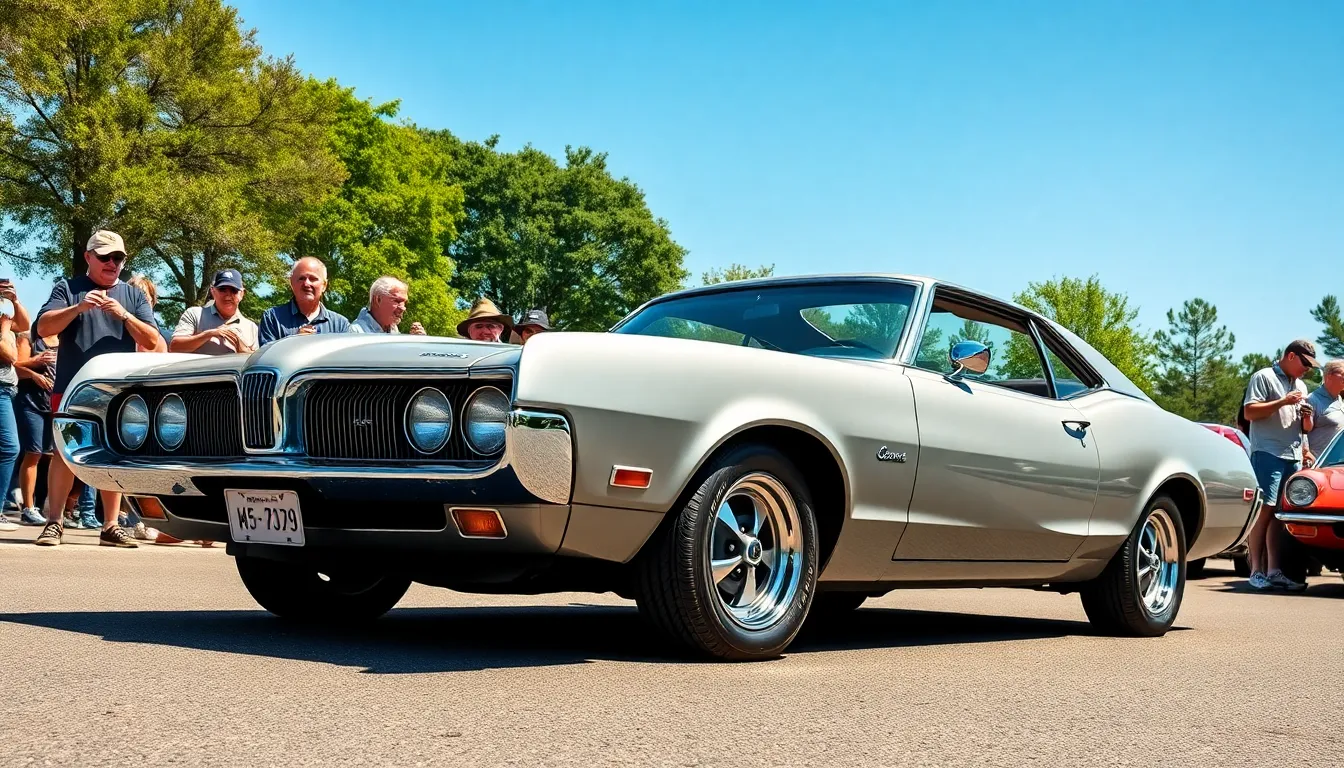We’ve all witnessed automotive legends come and go but few brands captured American hearts quite like Mercury. For over seven decades this distinctive marque delivered style sophistication and performance that bridged the gap between Ford’s practicality and Lincoln’s luxury.
Mercury’s journey from 1938 to 2010 tells a fascinating story of innovation reinvention and eventually farewell. We’re talking about iconic models that defined generations – from the sleek Mercury Eight that launched the brand to the muscle-bound Cougar that dominated the streets in the ’60s and ’70s.
Whether you’re a classic car enthusiast researching your next restoration project or simply curious about this beloved American brand we’ll explore Mercury’s rich heritage. From their groundbreaking designs to their most sought-after models today Mercury vehicles continue to turn heads at car shows and command respect among collectors worldwide.
The Rise of Mercury: How Ford’s Premium Division Came to Be
Ford Motor Company recognized a important gap in the automotive market during the late 1930s. The company needed a bridge between its affordable Ford models and the luxury Lincoln brand.
Ford’s Vision for a Mid-Market Brand
Henry Ford’s son, Edsel Ford, championed the creation of a medium-priced automobile division that would capture consumers seeking more than basic transportation. Ford executives observed Chrysler’s success with Plymouth, Dodge, and Chrysler brands spanning different price points. General Motors dominated the market with Chevrolet, Pontiac, Oldsmobile, Buick, and Cadillac covering every segment.
Ford’s leadership team identified middle-class Americans who desired upscale features without premium pricing. These potential customers wanted sophisticated styling, enhanced comfort, and performance upgrades beyond standard Ford offerings. Market research revealed that many buyers skipped directly from Ford to Lincoln, leaving substantial revenue on the table.
The company’s strategic planners envisioned Mercury as a stepping stone brand that would retain Ford customers as their income increased. This approach would prevent defection to competing manufacturers’ mid-range models like Pontiac or Oldsmobile. Ford aimed to create customer loyalty across multiple price segments within their own product lineup.
Mercury’s Launch in 1938
Mercury debuted on November 4, 1938, as Ford’s answer to the competitive mid-market segment. The inaugural Mercury Eight featured a 239 cubic inch V8 engine that produced 95 horsepower, positioning it between Ford’s 85-horsepower V8 and Lincoln’s more powerful units.
Edsel Ford personally oversaw Mercury’s design development, ensuring the brand maintained distinct styling cues that differentiated it from both Ford and Lincoln models. The Mercury Eight showcased a longer wheelbase than Ford vehicles, measuring 116 inches compared to Ford’s 112-inch span. Premium interior appointments included cloth and leather seating options, enhanced dashboard materials, and improved sound deadening.
Ford invested heavily in Mercury’s marketing campaign, positioning the brand as “The Car That Dares to Ask ‘Why?'” Early advertisements emphasized Mercury’s value proposition of luxury features at accessible prices. Dealerships received specialized training to sell Mercury vehicles alongside Ford models, creating a comprehensive sales approach.
The launch year saw Mercury produce 65,884 vehicles, establishing immediate market presence. Consumer response exceeded Ford’s expectations, with buyers appreciating Mercury’s blend of performance, comfort, and affordability. This successful introduction validated Ford’s three-tier brand strategy and set the foundation for Mercury’s seven-decade journey in the automotive marketplace.
Most Iconic Mercury Cars That Defined American Automotive History

Mercury’s automotive legacy produced several standout models that captured the hearts of American drivers and shaped automotive culture for generations.
1949 Mercury Eight Coupe
The 1949 Mercury Eight Coupe revolutionized American automotive design with its distinctive chopped top silhouette and powerful V8 engine. We see this model as the foundation of custom car culture, inspiring countless hot rod enthusiasts who transformed these vehicles into personalized masterpieces. Mercury’s engineering team delivered a flathead V8 producing 110 horsepower, making it a favorite among performance minded drivers who valued both style and substance.
Hollywood embraced the Mercury Eight Coupe as the ultimate symbol of teenage rebellion, featuring it prominently in films like “Rebel Without a Cause.” The model’s flowing body lines and chrome accents created an unmistakable presence on American roads throughout the 1950s. Custom builders particularly favored this Mercury platform because its sturdy construction and available parts made modifications both practical and affordable.
Mercury Cougar (1967-1970)
Mercury launched the Cougar in 1967 as their answer to the pony car revolution, positioning it as a more sophisticated alternative to the Ford Mustang. We recognize this model as Mercury’s most successful sports car, selling over 150,000 units in its debut year alone. The Cougar featured distinctive sequential turn signals, hidden headlights, and a longer wheelbase that provided superior ride quality compared to its Ford sibling.
Performance enthusiasts could choose from multiple engine options, including the legendary 390 cubic inch V8 that produced 320 horsepower in the GT E package. Mercury’s marketing campaign emphasized the Cougar’s unique identity with the slogan “The man’s car in the sporty car field,” targeting buyers who wanted muscle car performance wrapped in upscale styling. The model earned Motor Trend’s Car of the Year award in 1967, validating Mercury’s vision of combining luxury appointments with genuine sports car capabilities.
Mercury Grand Marquis
The Grand Marquis represented Mercury’s commitment to full size luxury sedans from 1975 through 2011, becoming one of America’s longest running nameplates. We consider this model the epitome of traditional American luxury, offering spacious interiors and smooth V8 power when many competitors shifted toward smaller engines. Mercury positioned the Grand Marquis as a premium alternative to the Ford Crown Victoria, featuring upgraded trim materials and additional sound deadening for a quieter cabin experience.
Fleet buyers embraced the Grand Marquis for its reliability and low maintenance costs, making it a popular choice for taxi services and government agencies across the United States. The model’s body on frame construction provided exceptional durability, with many examples exceeding 300,000 miles with proper maintenance. Mercury’s final Grand Marquis rolled off the assembly line in January 2011, marking the end of an era for traditional American luxury sedans and the Mercury brand itself.
Mercury’s Role in Hot Rod Culture and Customization
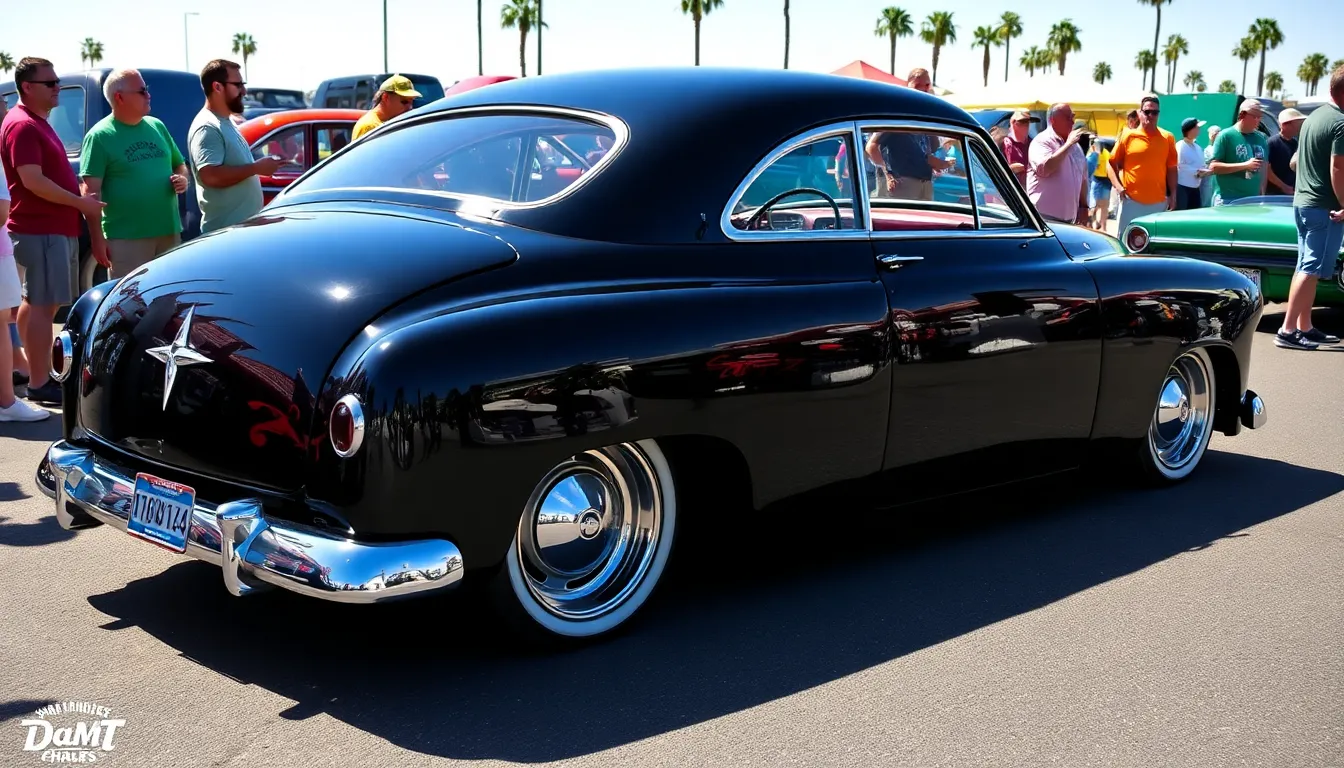
Mercury cars became the canvas of choice for hot rod enthusiasts and custom builders throughout the golden age of automotive modification. These vehicles offered the perfect combination of distinctive styling and mechanical potential that made them ideal for creating personalized automotive statements.
The “Lead Sled” Era
Mercury vehicles dominated the lead sled movement of the late 1940s and early 1950s, earning their nickname from the extensive bodywork modifications that smoothed every surface. Custom builders filled seams with lead, lowered suspension systems, and chopped rooflines to create flowing silhouettes that emphasized horizontal lines. The 1949-1951 Mercury models became particularly sought after for their already sleek factory design that required minimal modification to achieve the desired look.
Body shops across America transformed these cars into rolling sculptures by removing chrome trim, welding shut door handles, and installing electric solenoids for smooth entry. Builders often channeled the body over the frame rails to achieve dramatic lowering effects that made these Mercurys appear to glide just inches above the pavement. Paint schemes typically featured deep, rich colors like maroon, dark green, or black that enhanced the car’s mysterious and rebellious character.
James Dean’s Mercury Connection
James Dean’s personal 1949 Mercury coupe became an icon of teenage rebellion and cool factor that influenced an entire generation of car enthusiasts. Dean purchased his Mercury in 1954 and had it customized with a lowered stance, custom paint, and interior modifications that reflected his personal style. The car appeared in several photographs with the actor and became synonymous with his rebellious image long before his tragic death in 1955.
Hollywood embraced the Mercury’s cinematic appeal in films like “Rebel Without a Cause,” where these cars represented youth culture and defiance against authority. Dean’s influence extended beyond movies as young people across America sought to emulate his style by acquiring and customizing their own Mercury vehicles. The association between Mercury cars and youth rebellion created a lasting cultural impact that elevated these vehicles beyond mere transportation into symbols of independence and nonconformity.
Custom Mercury Scene of the 1950s
California’s custom car culture flourished around Mercury vehicles as builders like George and Sam Barris transformed these cars into automotive masterpieces. Custom shops in Los Angeles became famous for their Mercury creations that featured radical modifications including sectioned bodies, custom grilles, and unique paint treatments. The Hirohata Mercury, built by Sam Barris in 1953, exemplified the pinnacle of custom Mercury artistry with its chopped top, sectioned body, and distinctive two-tone paint scheme.
Regional car clubs dedicated to Mercury customs emerged across the United States, hosting shows and cruises that celebrated these modified vehicles. Builders competed to create the most dramatic transformations using techniques like pancaking hoods, installing floating headlights, and crafting one-off interior designs. Magazine coverage in publications like “Hot Rod” and “Car Create” spread Mercury customization techniques nationwide, inspiring countless enthusiasts to attempt their own modifications and contributing to Mercury’s legendary status in hot rod culture.
Performance Mercury Cars That Dominated the Streets
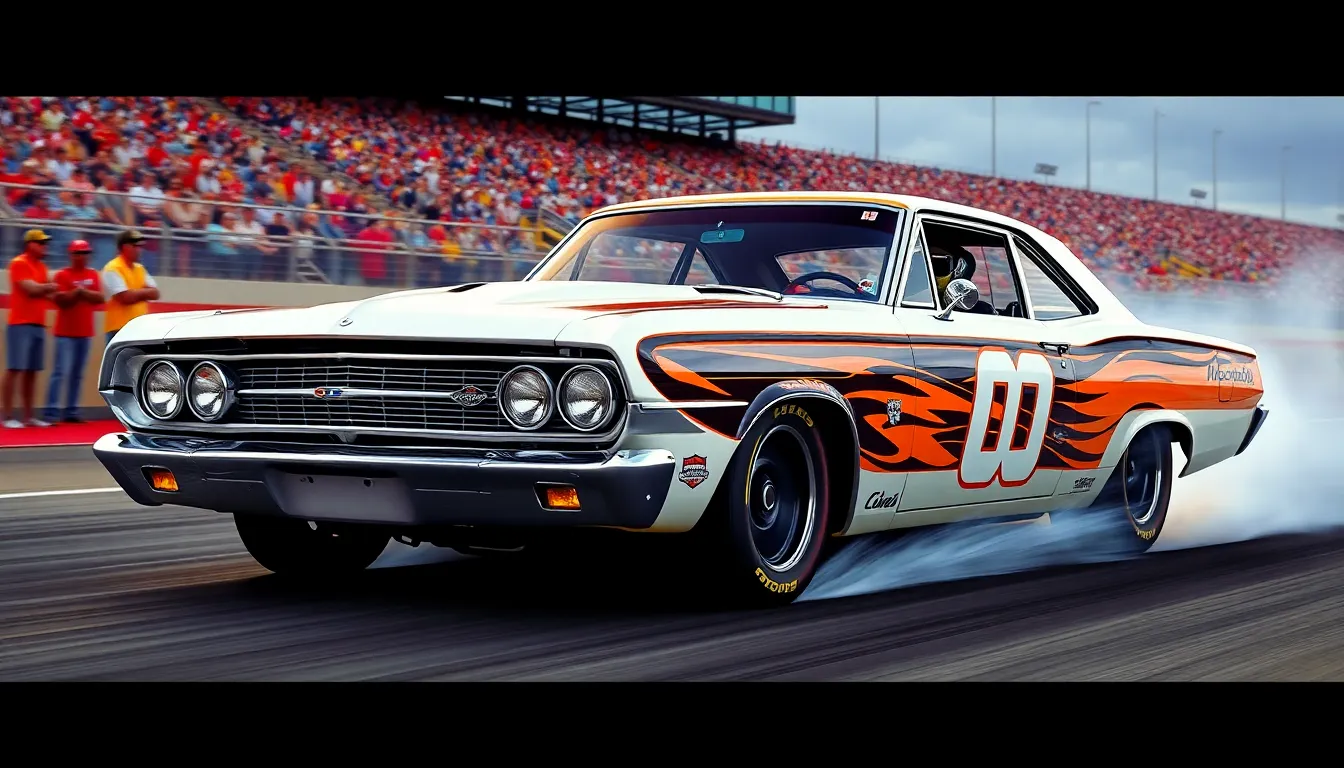
Mercury’s performance legacy extends far beyond custom culture into the area of pure speed and racing dominance. We’ll explore the high-performance models that showcased Mercury’s engineering prowess and competitive spirit.
Mercury Cyclone and NASCAR Success
Cyclone models transformed Mercury’s reputation from luxury comfort to track-ready performance machines. We saw the Cyclone debut in 1964 as Mercury’s answer to the muscle car wars, featuring aggressive styling and powerful engine options that immediately caught the attention of racing enthusiasts.
NASCAR competition became the Cyclone’s proving ground throughout the late 1960s. We witnessed Mercury drivers like Cale Yarborough and Dan Gurney pilot these machines to victory, with the aerodynamic Cyclone Spoiler models achieving particular success on superspeedways. Racing versions featured specialized body modifications that improved high-speed stability and reduced drag.
Performance specifications placed the Cyclone among the era’s most formidable muscle cars. We found that top-tier models offered the 428 Cobra Jet V8 engine, producing 335 horsepower and capable of quarter-mile times in the mid-13-second range. Special editions like the 1969 Cyclone CJ included functional hood scoops, competition suspension, and distinctive graphics packages.
Track victories validated Mercury’s engineering capabilities on America’s premier racing circuits. We documented many wins at Daytona, Talladega, and other major NASCAR venues, with Mercury capturing manufacturer championships and establishing credibility among performance car buyers who wanted proven racing technology in their street machines.
Marauder S-55 Power and Speed
Marauder S-55 models represented Mercury’s most powerful full-size performance offerings of the early 1960s. We discovered that these luxury muscle cars combined the comfort of Mercury’s premium appointments with engines borrowed from Ford’s high-performance arsenal, creating a unique blend of sophistication and street dominance.
Engine options pushed the boundaries of big-block power in elegant full-size packages. We found that S-55 models featured the 390 cubic inch V8 as standard equipment, with optional 406 and 427 cubic inch powerplants delivering exceptional straight-line acceleration. These engines produced between 300 and 425 horsepower depending on configuration.
Distinctive styling elements set the Marauder apart from conventional Mercury sedans. We noted the aggressive front fascia, dual exhaust outlets, and special wheel treatments that announced the car’s performance intentions. Interior appointments included bucket seats, console-mounted shifters, and full instrumentation that emphasized the sporting character.
Quarter-mile performance numbers rivaled dedicated muscle cars even though the Marauder’s luxury positioning. We recorded times in the low 14-second range for well-tuned examples, making these cars formidable competitors at drag strips while maintaining the refinement expected from Mercury buyers who demanded both comfort and speed.
Capri Import Sports Car Legacy
Capri models brought European sports car handling to Mercury showrooms starting in 1970. We imported these German-built coupes to compete directly with popular sports cars like the Datsun 240Z and provide Mercury dealers with an affordable performance option that appealed to younger buyers seeking driving excitement.
Engineering partnerships with Ford of Europe created sophisticated chassis dynamics. We utilized independent front suspension, rack and pinion steering, and carefully tuned springs that delivered responsive handling characteristics previously unavailable in Mercury’s domestic lineup. These engineering decisions resulted in cars that could navigate twisty roads with confidence.
Engine variety allowed customers to choose their preferred performance level. We offered everything from economical four-cylinder units to potent V6 engines, with the 2.8-liter V6 producing 105 horsepower and delivering spirited acceleration. Special RS models featured sport suspension, distinctive graphics, and performance-oriented interior appointments.
Racing success in international competition validated the Capri’s sporting credentials. We saw these cars compete successfully in Trans-Am racing and European touring car championships, with victories that demonstrated their competitive potential and attracted enthusiast buyers who appreciated proven racing heritage in their personal transportation choices.
Mercury’s Design Evolution Through the Decades
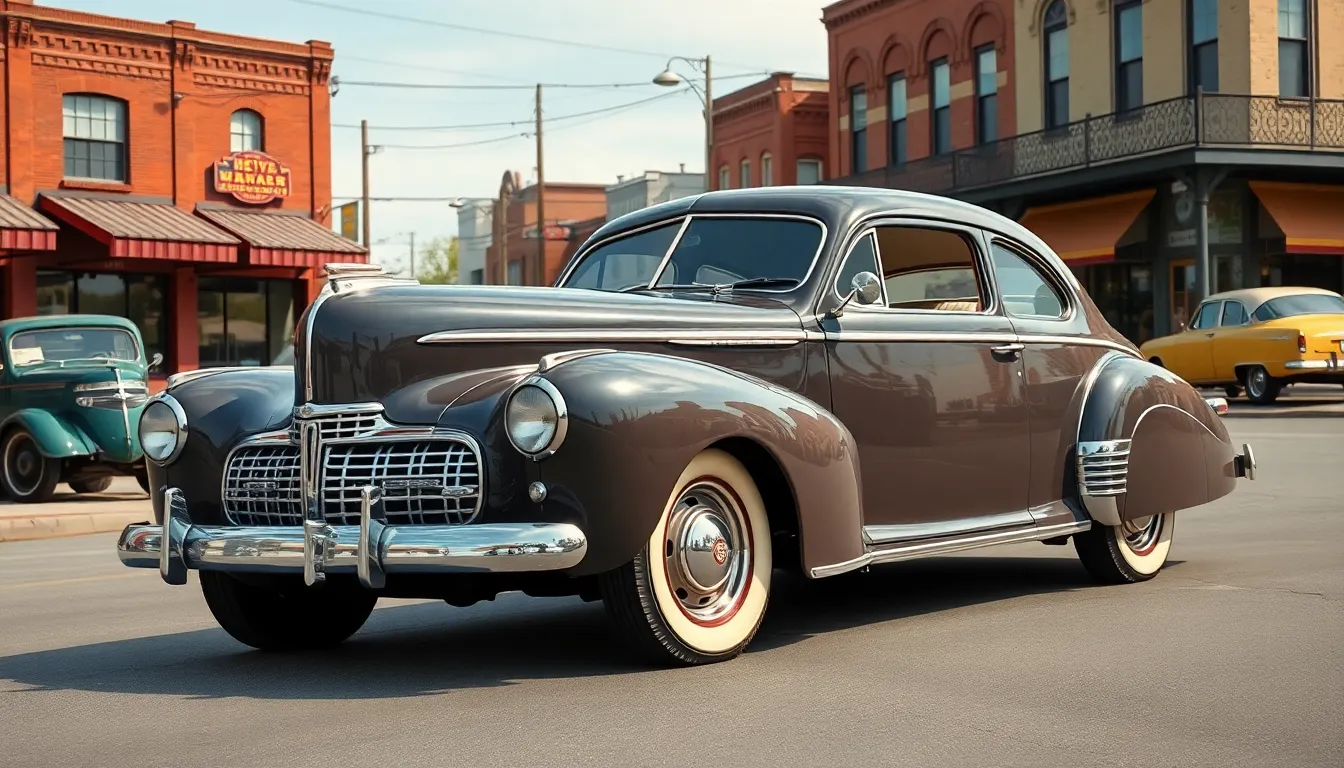
Mercury cars transformed dramatically across seven decades, showcasing distinct design philosophies that reflected America’s changing automotive tastes. We’ll explore how Mercury adapted its styling to capture each era’s unique aesthetic preferences.
1940s Art Deco Styling
Streamlined silhouettes defined Mercury’s early design language, drawing inspiration from the Art Deco movement that shaped 1940s American culture. The 1940 Mercury featured flowing fender lines that integrated seamlessly into the body, creating a unified appearance that distinguished it from Ford’s more utilitarian designs. Chrome accents appeared sparingly but strategically, highlighting the car’s horizontal emphasis with subtle trim pieces around the grille and windows.
Bold horizontal grilles became Mercury’s signature design element, featuring wide chrome bars that projected strength and sophistication. The 1941-1948 models showcased increasingly refined proportions, with lower hood lines and extended rear decks that emphasized the car’s substantial presence. Body-colored steel wheels with chrome hubcaps reinforced Mercury’s premium positioning while maintaining the clean, uncluttered aesthetic that Art Deco principles demanded.
1950s Chrome and Fin Era
Chrome proliferation marked Mercury’s embrace of 1950s automotive excess, transforming the brand’s restrained elegance into bold statements of American prosperity. The 1952 Mercury featured extensive chrome treatments on bumpers, grilles, and side trim, while maintaining the horizontal design themes that customers associated with the brand. Wraparound windshields appeared in 1954, creating a more modern greenhouse that improved visibility and enhanced the cars’ futuristic appearance.
Tail fins emerged gradually on Mercury models, reaching their peak with the 1957-1958 Turnpike Cruiser’s dramatic rear styling. The Turnpike Cruiser introduced retractable rear windows and a distinctive roofline that positioned Mercury as an innovator in automotive design. Two-tone paint schemes became increasingly popular, with contrasting colors applied to roofs, side panels, and accent areas that emphasized Mercury’s sophisticated styling approach.
1960s Muscle Car Aesthetics
Performance-oriented styling dominated Mercury’s 1960s design philosophy, reflecting America’s growing fascination with speed and power. The 1964 Cyclone introduced aggressive hood scoops, racing stripes, and muscular proportions that communicated athletic capability. Clean, angular lines replaced the curves of previous decades, creating a more masculine appearance that appealed to younger buyers seeking excitement in their automotive choices.
Functional design elements became prominent features, with air intakes, dual exhausts, and performance wheels serving both aesthetic and practical purposes. The 1967 Cougar launched with sequential turn signals, hideaway headlights, and a distinctive grille that established Mercury’s sports car identity. Bold color options like Grabber Orange, Competition Blue, and Calypso Coral reflected the era’s adventurous spirit while differentiating Mercury from more conservative competitors.
1970s-2000s Modern Interpretations
Aerodynamic efficiency shaped Mercury’s later design evolution, beginning with the 1970s fuel crisis that demanded more practical styling approaches. The 1979 Capri adopted European-influenced lines with integrated bumpers and reduced chrome, signaling Mercury’s shift toward international design standards. Sharp creases and angular surfaces defined 1980s models like the Merkur XR4Ti, which introduced German engineering aesthetics to American Mercury dealerships.
Rounded forms returned in the 1990s with models like the Mystique and Sable, featuring smooth surfaces and integrated lighting that emphasized wind-tunnel development. The final Mercury models of the 2000s, including the Milan and Grand Marquis, balanced traditional luxury cues with contemporary safety requirements and fuel efficiency demands. LED lighting, sculpted body panels, and refined proportions marked Mercury’s final attempts to remain relevant in an increasingly competitive luxury market before the brand’s discontinuation in 2010.
Famous Mercury Cars in Movies and Pop Culture
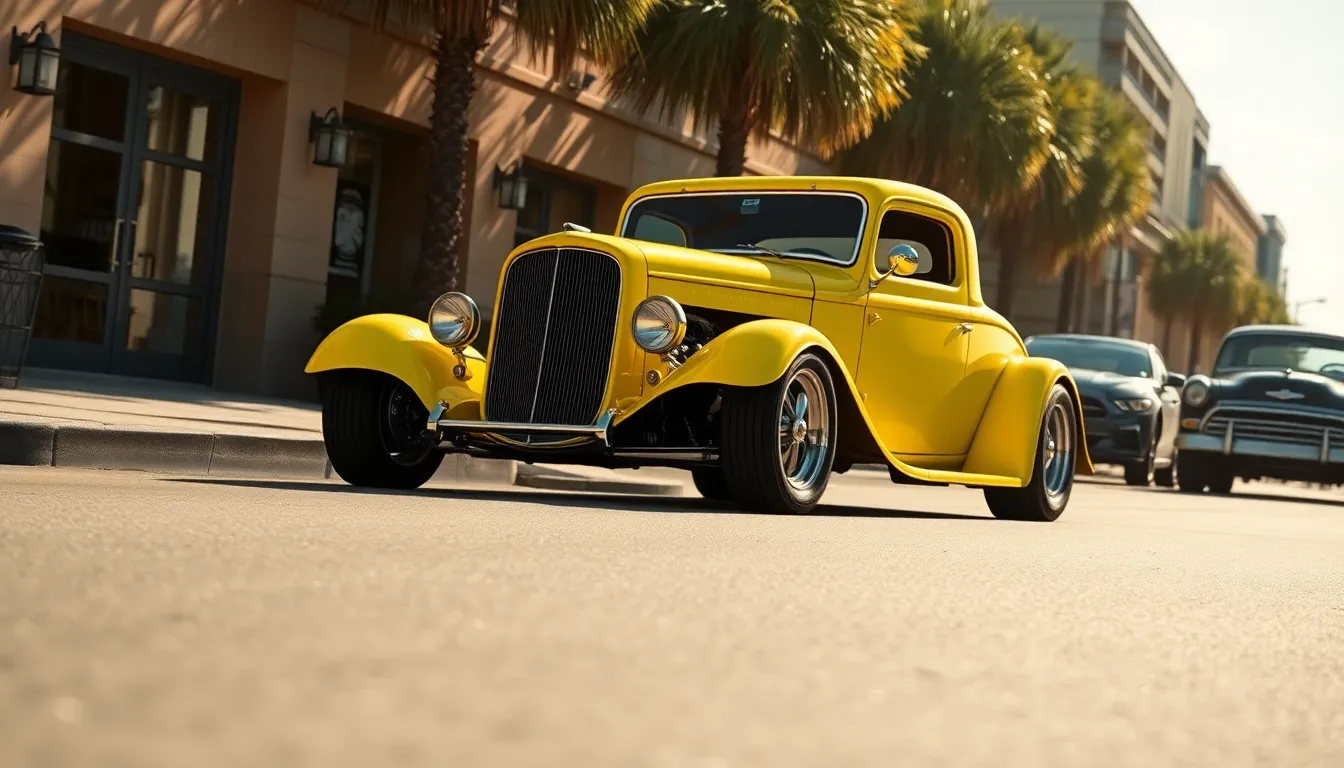
Mercury’s cinematic legacy extends far beyond automotive showrooms into the area of entertainment. We’ve witnessed countless Mercury vehicles become cultural icons through their memorable appearances in films, television shows, and music videos.
American Graffiti’s Yellow Coupe
American Graffiti’s most memorable Mercury belongs to John Milner, the character portrayed by Paul Le Mat in George Lucas’s 1973 masterpiece. We recognize this bright yellow 1932 Ford Deuce Coupe as the film’s automotive star, though the movie features several Mercury models throughout its nostalgic narrative. The film’s drag racing sequences showcase Mercury’s performance capabilities during the golden age of hot rodding. Milner’s character represents the rebellious spirit that Mercury vehicles embodied in youth culture. We see how the movie’s success sparked renewed interest in 1950s Mercury models among collectors and enthusiasts. The film’s authentic portrayal of car culture elevated Mercury’s status as an essential part of American automotive heritage.
Mercury Appearances in Film Noir
Mercury vehicles became the preferred choice for film noir productions during the 1940s and 1950s. We observe how these cars perfectly matched the genre’s dark, sophisticated atmosphere with their sleek silhouettes and dramatic presence. The 1949 Mercury Eight appeared in many noir classics, including “The Big Heat” and “Kiss Me Deadly,” where its imposing design complemented the stories’ tension. Directors appreciated Mercury’s visual impact in black and white cinematography, where chrome details and flowing lines created striking compositions. We notice how Mercury’s association with both luxury and danger made it ideal for portraying characters who operated between legitimate business and criminal enterprises. The brand’s film noir appearances cemented its reputation as a symbol of urban sophistication and mystery.
Television and Music Video Features
Television producers have consistently chosen Mercury vehicles for their distinctive visual appeal and cultural significance. We’ve seen Mercury cars featured prominently in period dramas like “Mad Men,” where they authentically represent the automotive industry of the 1960s. Music videos from artists like The Beach Boys and Jan and Dean frequently showcased Mercury models during the surf music era. MTV’s early programming featured Mercury Cougars and Grand Marquis in various rock and pop videos throughout the 1980s. We recognize how Mercury’s presence in television commercials during the brand’s active years helped establish its identity in popular culture. The Grand Marquis became a staple in police procedural shows, often serving as unmarked detective vehicles. Mercury’s television legacy continues through classic car restoration shows and automotive documentaries that celebrate the brand’s rich history.
The Decline and Discontinuation of Mercury Cars
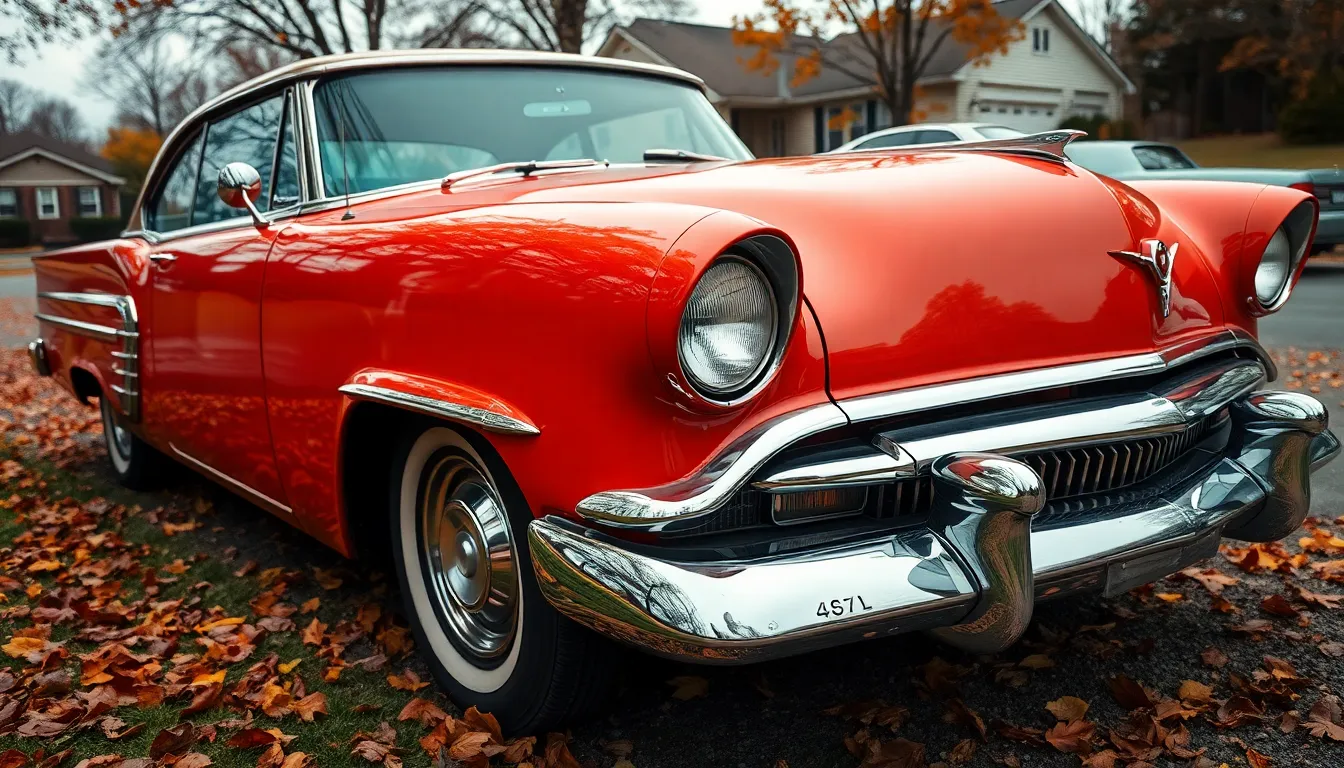
After decades of success and cultural prominence, Mercury faced mounting challenges that eventually led to its demise. We witnessed a gradual erosion of the brand’s market position through the final decades of its existence.
Market Challenges in the 1980s-1990s
Brand identity confusion plagued Mercury throughout the 1980s as consumers struggled to distinguish between Mercury, Ford, and Lincoln models. Mercury vehicles increasingly shared platforms with Ford counterparts, diluting the brand’s unique positioning that once attracted middle-class buyers seeking premium features.
Competition from Japanese automakers intensified during this period, with Honda, Toyota, and Nissan capturing important market share through superior reliability and fuel efficiency. Mercury’s traditional focus on larger, V8-powered vehicles became less appealing as gas prices fluctuated and consumer preferences shifted toward smaller, more economical cars.
Dealer network struggles emerged as Mercury shared showrooms with Lincoln dealers, creating internal competition rather than complementary sales opportunities. We observed many dealers prioritizing higher-margin Lincoln sales over Mercury vehicles, reducing Mercury’s visibility and sales support in the marketplace.
Aging customer demographics presented another important challenge, as Mercury’s core buyers grew older without sufficient younger consumers replacing them. The brand’s association with traditional American luxury appealed less to Gen X buyers who favored European imports or sporty domestic alternatives like the Ford Mustang.
Ford’s Strategic Decisions
Platform sharing strategies became Ford’s primary approach to Mercury in the 1990s and 2000s, with models like the Mercury Sable essentially becoming rebadged Ford Taurus variants. Ford’s decision to reduce development costs by creating “twin” vehicles eliminated Mercury’s distinctive character that had defined the brand since 1938.
Investment reallocation shifted Ford’s resources away from Mercury toward more profitable ventures and global expansion efforts. We saw Ford prioritize the Lincoln brand for luxury sales while focusing engineering resources on Ford’s core models and international markets rather than maintaining Mercury’s unique identity.
Retail consolidation efforts led Ford to encourage Lincoln Mercury dealer partnerships, further reducing Mercury’s independent presence in the marketplace. This strategy inadvertently created showroom competition where Lincoln’s higher margins and prestige naturally attracted more dealer attention and customer interest.
Brand portfolio rationalization became Ford’s long term strategy as executives questioned Mercury’s relevance in a crowded marketplace. Company leadership recognized that maintaining three domestic brands required resources that could be better deployed in growing international markets and emerging technologies.
The End of Production in 2011
Final model years saw Mercury’s lineup reduced to just four vehicles by 2010: the Grand Marquis, Milan, Mountaineer, and Mariner. Ford announced Mercury’s discontinuation in June 2010, marking the end of a 72 year journey that had produced over 6 million vehicles.
Production cessation occurred gradually throughout 2010 and early 2011, with the Mercury Grand Marquis becoming the final Mercury vehicle to roll off the assembly line on January 4, 2011. We witnessed the conclusion of Mercury’s production at Ford’s St. Thomas Assembly plant in Ontario, Canada, where the last Grand Marquis completed the brand’s manufacturing legacy.
Dealer transition programs helped Mercury dealers adapt to the brand’s elimination, with Ford offering financial incentives and Lincoln franchise opportunities to affected retailers. Approximately 1,500 Lincoln Mercury dealers faced important business adjustments as they lost half their product lineup overnight.
Market impact of Mercury’s discontinuation left a noticeable gap in Ford’s mid-luxury segment, though sales figures had declined to just 93,000 units in 2010 compared to Mercury’s peak years when annual sales exceeded 400,000 vehicles. The brand’s elimination saved Ford an estimated $400 million annually in development and marketing costs while allowing greater focus on Lincoln’s luxury positioning.
Collecting Mercury Cars: Values and Restoration Tips

Mercury’s discontinuation has transformed these vehicles from everyday transportation into coveted collectibles. Today’s collectors face unique opportunities and challenges when pursuing Mercury models.
Most Valuable Mercury Models Today
Mercury Cougar models from 1967-1970 consistently command the highest prices among collectors. First-generation Cougars with original 390 or 427 big-block engines regularly sell for $30,000 to $80,000 depending on condition and rarity.
1949-1951 Mercury Eight models remain extremely valuable due to their cultural significance and custom car heritage. Clean examples now fetch $25,000 to $60,000, while professionally restored lead sleds can exceed $100,000 at auction.
Mercury Cyclone models from the muscle car era represent excellent investment potential. 1969-1970 Cyclone Spoilers with 428 Cobra Jet engines trade between $40,000 and $75,000, while rare CJ models with four-speed transmissions push toward six-figure territory.
Limited production models like the 1970 Cyclone Spoiler II and 1969 Marauder X-100 command premium prices. These rare variants often sell for 50-100% more than standard models due to their NASCAR heritage and low production numbers.
| Mercury Model | Years | Current Value Range | Key Features |
|---|---|---|---|
| Cougar XR-7 | 1967-1970 | $35,000-$80,000 | 390/427 V8, luxury interior |
| Cyclone CJ | 1969-1970 | $40,000-$75,000 | 428 Cobra Jet engine |
| Mercury Eight | 1949-1951 | $25,000-$60,000 | Flathead V8, custom potential |
| Marauder S-55 | 1969-1970 | $20,000-$45,000 | 390/428 V8, bucket seats |
Restoration Resources and Parts Availability
National Parts Depot serves as our primary resource for Mercury restoration parts, maintaining extensive inventories of body panels, trim pieces, and mechanical components. Their Mercury-exact catalog includes hard-to-find items like Cougar sequential taillights and Cyclone hood scoops.
Dennis Carpenter Ford Restoration Parts offers comprehensive Mercury parts support with over 40 years of experience. We’ve found their reproduction quality excellent for items like dashboard components, weatherstripping, and exterior trim pieces.
Mercury reproduction specialists like Dearborn Classics and NPD focus specifically on Mercury models. These vendors produce accurate reproductions of discontinued parts including grilles, bumpers, and interior components that Ford no longer manufactures.
Salvage yards in Michigan, California, and Texas maintain important Mercury inventories from the brand’s peak production years. We recommend calling ahead to verify part availability, as many yards now computerize their inventories for faster searches.
Online marketplaces like eBay Motors and Hemmings provide access to rare NOS (New Old Stock) parts and used components. Mercury Forums and Facebook groups often feature members selling parts from their personal collections or parts cars.
Mercury Car Clubs and Communities
Mercury Cougar Owners Club represents the largest Mercury-exact organization with over 2,000 members worldwide. Their annual convention features technical seminars, parts vendors, and concours judging that helps establish market values and restoration standards.
International Mercury Owners Association (IMOA) welcomes all Mercury models and provides technical resources, restoration guides, and regional chapter meetings. We’ve participated in their quarterly magazine contributions and found their technical advice invaluable for complex restoration projects.
Regional Mercury clubs operate in major metropolitan areas including the Mercury Marauder Club and California Mercury Owners. These groups organize local cruise nights, swap meets, and technical sessions where members share restoration experiences and parts sources.
Online communities through Facebook groups like “Mercury Cars Forever” and “Mercury Muscle Cars” connect collectors globally. These platforms help parts trading, restoration advice sharing, and event coordination among Mercury enthusiasts.
Specialty forums including Cougar Club of America’s technical forum provide model-exact expertise. Members contribute detailed restoration documentation, wiring diagrams, and troubleshooting guides that prove essential during complex restoration projects.
Car show circuits feature Mercury-exact classes at events like the Ford Carlisle All-Ford Nationals and Mercury gatherings at Charlotte AutoFair. These venues offer opportunities to network with other collectors, assess market values, and showcase completed restorations.
Conclusion
Mercury’s journey from a bold 1938 experiment to its 2010 farewell represents one of automotive history’s most fascinating chapters. We’ve witnessed how this brand carved its unique identity in American culture through innovative design performance engineering and an undeniable presence in popular media.
Today Mercury cars continue to captivate collectors and enthusiasts who recognize their historical significance and timeless appeal. The growing restoration community and active car clubs ensure these vehicles remain vibrant parts of our automotive heritage rather than forgotten relics.
Whether you’re drawn to the rebellious spirit of a customized lead sled the raw power of a Cyclone or the refined luxury of a Grand Marquis Mercury’s legacy lives on through passionate owners who keep these remarkable machines running and celebrated.
Frequently Asked Questions
What years did Mercury produce cars?
Mercury operated as Ford’s premium automotive division from 1938 to 2010, spanning over 70 years. The brand was officially discontinued in January 2011 when the final Mercury Grand Marquis rolled off the assembly line, marking the end of an era for this iconic American automotive brand.
What was Mercury’s most popular model?
The Mercury Cougar, launched in 1967, stands as Mercury’s most successful sports car. It offered a sophisticated alternative to the Ford Mustang with luxury features and excellent performance. The Cougar became synonymous with Mercury’s brand identity and earned widespread acclaim for its stylish design and engineering excellence.
Why did Ford discontinue the Mercury brand?
Mercury faced multiple challenges including brand identity confusion, aging customer demographics, and intense competition from Japanese automakers. Internal competition with Ford and Lincoln models, combined with platform sharing that diminished Mercury’s unique identity, ultimately led to Ford’s decision to discontinue the brand in 2010.
What are the most valuable Mercury cars today?
The most collectible Mercury models include the Cougar, Mercury Eight, and Cyclone, which command high prices among collectors. The 1949 Mercury Eight Coupe is particularly sought after due to its revolutionary design and cultural significance in hot rod customization and Hollywood films.
What role did Mercury play in hot rod culture?
Mercury became central to hot rod culture, especially during the lead sled era of the late 1940s and early 1950s. The 1949-1951 Mercury models were particularly popular with custom builders due to their sleek designs. Cultural icons like James Dean’s customized 1949 Mercury coupe further solidified the brand’s rebellious image.
Where can I find parts for Mercury restoration?
Restoration parts are available through specialized vendors like National Parts Depot and Dennis Carpenter Ford Restoration Parts. Mercury car clubs and online communities also provide valuable resources for sourcing hard-to-find components and technical support for restoration projects.
What was the Mercury Eight?
The Mercury Eight debuted on November 4, 1938, as Mercury’s first model featuring a V8 engine and distinctive styling. It filled the gap between Ford’s affordable models and luxury Lincoln vehicles, targeting middle-class consumers seeking upscale features without premium pricing.
Did Mercury have any performance cars?
Yes, Mercury produced several high-performance models including the Cyclone (1964), which achieved NASCAR success, and the Marauder S-55, which combined luxury with big-block power. The Capri models also introduced European sports car handling to Mercury’s lineup, appealing to younger buyers.

